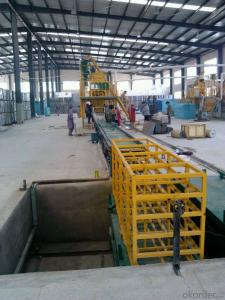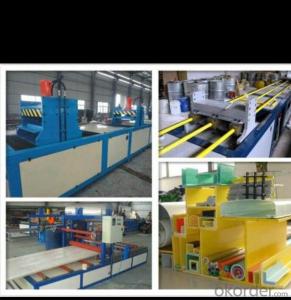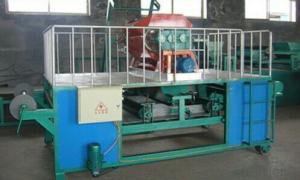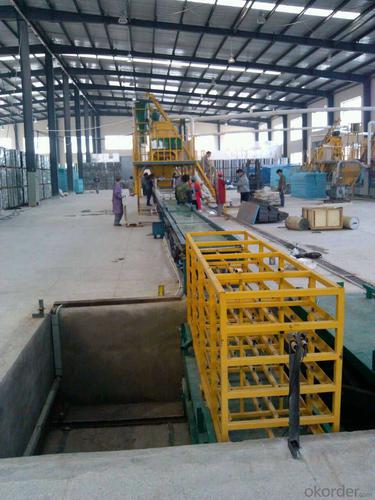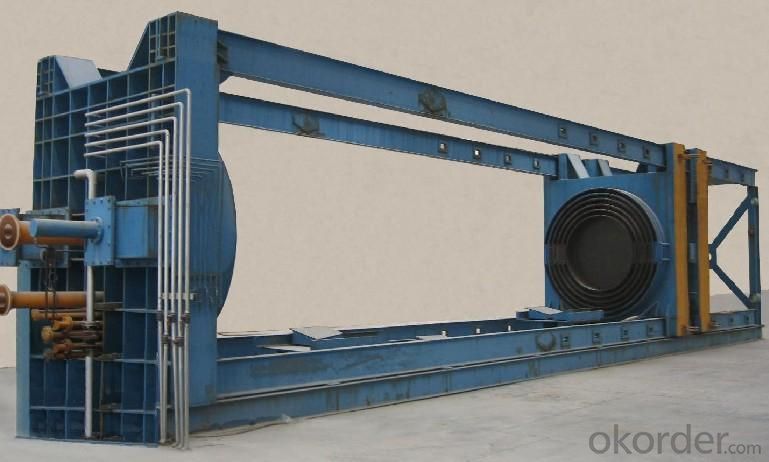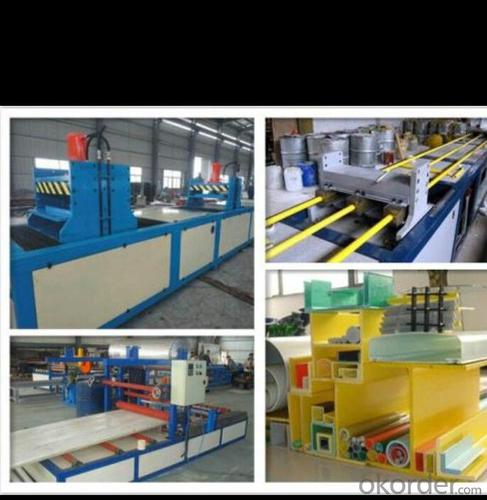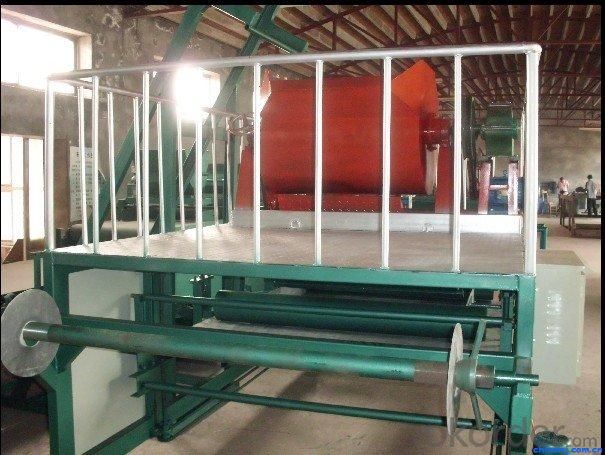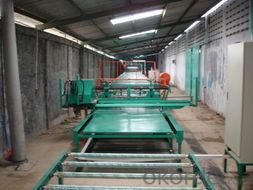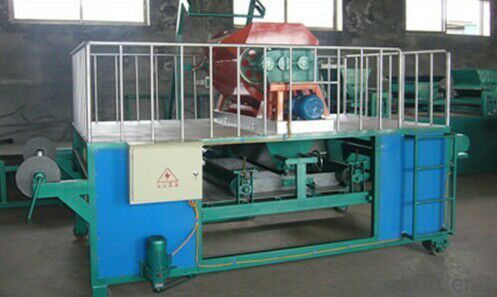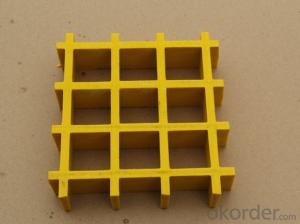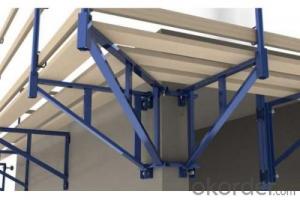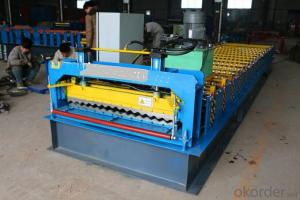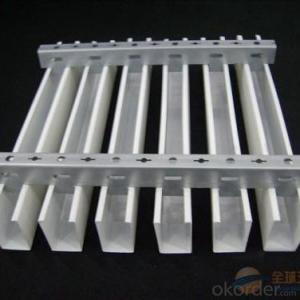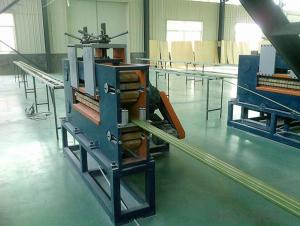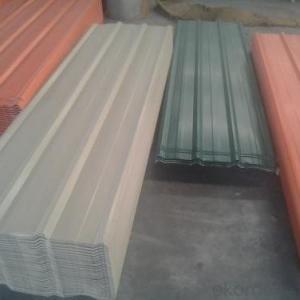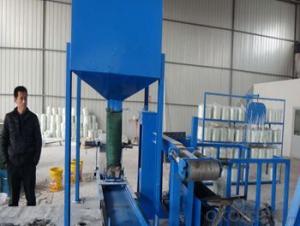FRP Pultrusion Profiles - Pultruded Grating with Anti-Flammable and Latest Styles
- Loading Port:
- Tianjin
- Payment Terms:
- TT OR LC
- Min Order Qty:
- 25 m.t.
- Supply Capability:
- 50000 m.t./month
OKorder Service Pledge
OKorder Financial Service
You Might Also Like
PRODUCT DESCRIPTION
FRP pultruded grating has the most characteristics of molded grating, but it has its distinct advantages, it has very high fiberglass content in the loading direction, so it has very high load capability, it has more superiority when used at wide span, so that the basic support will be decreased and the project cost will be reduced accordingly.
SPECIFICATION
Thickness (mm) | Bar width (mm) | Open space (mm) | Open rate (%) | Approx weight (kg/m |
25.4 | 15.2 | 22.8 | 60 | 13.2 |
25.4 | 15.2 | 15.2 | 50 | 15.9 |
25.4 | 15.2 | 10.1 | 40 | 18.5 |
25.4 | 40 | 10.8 | 21 | 14.5 |
38.1 | 15.2 | 22.8 | 60 | 15.8 |
38.1 | 15.2 | 15.2 | 50 | 19.1 |
38.1 | 15.2 | 10.1 | 40 | 22.4 |
50.8 | 25.4 | 25.4 | 50 | 16.6 |
50.8 | 25.4 | 12.7 | 33 | 21.1 |
CHOICE FOR PULTRUDED GRATING
Resin: GP resin, ISO resin, VE resin, Phenol resin
Color choice: Yellow, gray, green, custom color
Surface choice: Groove surface, grit surface, lozenge cover surface
FEATURES
a. Anti-corrosion and anti-rust
b. Light weight and high strength
c. Anti-flammable
d. Anti- fatigue
e. Safe and anti-slippery
f. Anti-ageing
g. Easy of maintenance
FIELDS SERVED
Sewage treatment,
water supply and drainage,
chemical industry,
oil industry.
APPLICATION
Operation terrace,
stair walkway,
ground floor,
trench cover,
sidewalk,
foot bridge,
equipment safety fence,
scaffold.
COMPANT DESCRIPTION
CNBM,China National Building Materials Group is a state-owned enterprise in charge of administrative affairs in china building materials industry. Established in 1984, CNBM is a large group corporation of building materials with total assets of 25 billion RMB and a total staff of 30,000.CNBM now owns 200 subordinating firms of solely owned and joint-venture companies.
CNBM International Corporation is one subsidiary of CNBM, we focus on offering good-quality products,professional service and complete solution to our customers. Strong delivery capacity, advanced technology& management, strong financing capability and excellent after-sale service are our advantages in sharing international market.
FAQ
1.Q:Are you factory or trading company ?
A:We are Factory produce FRP machines and FRP products.
2.Q:If can customized by customers requirements?
A:yes,we can produce the machine with customized size.
3.Q:How about the payment?
A:We accept any kind of payment.
4.Q:What is the guarantee?
A:Gurantee is one year.
PICTURES
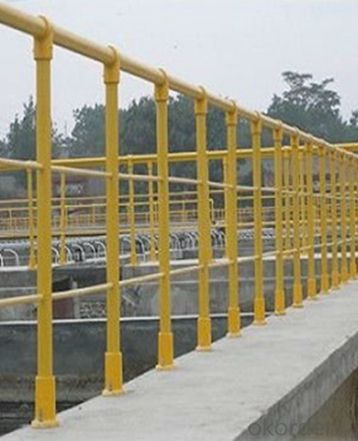
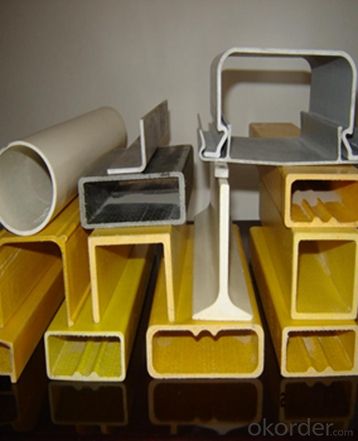
- Q: Can FRP pultrusion profiles be used in wastewater or sewage treatment plants?
- Yes, FRP pultrusion profiles can be used in wastewater or sewage treatment plants. FRP (Fiber Reinforced Plastic) materials offer excellent corrosion resistance, high strength-to-weight ratio, and durability, making them suitable for harsh environments like wastewater treatment facilities. These profiles can be used for various applications such as gratings, handrails, ladders, walkways, and structural supports, providing a long-lasting and low-maintenance solution for these facilities.
- Q: Are FRP pultrusion profiles resistant to high winds or hurricanes?
- Yes, FRP (Fiber Reinforced Polymer) pultrusion profiles are highly resistant to high winds and hurricanes. FRP is a composite material that combines the strength of fiberglass with the durability of polymers. This results in a lightweight yet incredibly strong material that can withstand extreme weather conditions. FRP pultrusion profiles have been extensively tested and have proven to have excellent wind resistance properties. They have a high stiffness-to-weight ratio, allowing them to withstand the forces exerted by high winds without bending or breaking. Additionally, the inherent flexibility of FRP allows it to absorb and distribute the forces exerted by wind, reducing the risk of damage. In the case of hurricanes, FRP pultrusion profiles have demonstrated their ability to withstand the strong winds and flying debris associated with these severe weather events. They have been used in various applications such as building facades, bridges, and utility poles in hurricane-prone areas, with great success. Furthermore, FRP pultrusion profiles are corrosion-resistant, which is another advantage when it comes to withstanding high winds and hurricanes. Unlike traditional materials like steel or wood, FRP profiles do not rust or rot when exposed to moisture, making them even more suitable for these challenging weather conditions. Overall, due to their high strength, durability, flexibility, and corrosion resistance, FRP pultrusion profiles are an excellent choice for applications where resistance to high winds or hurricanes is required.
- Q: Are FRP pultrusion profiles resistant to chemicals used in food packaging?
- FRP pultrusion profiles have proven to be highly resistant to chemicals typically employed in the realm of food packaging. Their remarkable ability to withstand a vast array of chemicals, including acids, bases, solvents, and oils, is well-documented. Consequently, FRP pultrusion profiles are a fitting option for applications that necessitate interaction with food packaging materials. Nevertheless, it is crucial to acknowledge that the chemical resistance of FRP profiles may differ based on the formulation and type of resin utilized. Consequently, it is prudent to seek guidance from the manufacturer or supplier to ensure that the chosen FRP pultrusion profiles are compatible with the specific chemicals employed within the food packaging industry.
- Q: Are FRP pultrusion profiles suitable for the manufacturing of antenna masts?
- Yes, FRP pultrusion profiles are suitable for the manufacturing of antenna masts. FRP pultrusion profiles offer several advantages such as high strength-to-weight ratio, corrosion resistance, and excellent electrical insulation properties. These characteristics make them ideal for antenna mast construction, as they can withstand various environmental conditions and provide reliable support for antennas.
- Q: Can FRP pultrusion profiles be used in the aerospace and aviation industry?
- Yes, FRP pultrusion profiles can be used in the aerospace and aviation industry. These profiles offer several advantages such as high strength-to-weight ratio, excellent corrosion resistance, and electrical insulation properties. They can be used in various applications including aircraft interiors, structural components, and electrical systems. Additionally, FRP pultrusion profiles can be customized to meet specific design requirements, making them suitable for use in the aerospace and aviation industry.
- Q: Can FRP pultrusion profiles be used in cooling towers?
- Yes, FRP (Fiber Reinforced Polymer) pultrusion profiles can be used in cooling towers. FRP pultrusion profiles offer several advantages that make them suitable for cooling tower applications. Firstly, FRP pultrusion profiles have excellent corrosion resistance, which is essential in a cooling tower environment where exposure to water and chemicals is common. Unlike traditional materials like steel, FRP pultrusion profiles do not rust or corrode, ensuring longer service life and reduced maintenance costs. Secondly, FRP pultrusion profiles have high strength-to-weight ratio, making them lightweight yet strong enough to withstand the structural requirements of cooling towers. This allows for easier installation and transportation, reducing overall project costs. Thirdly, FRP pultrusion profiles have excellent thermal insulation properties. Cooling towers involve the transfer of heat from water to the surrounding air, and the thermal insulation provided by FRP pultrusion profiles helps enhance the efficiency of the cooling process. Lastly, FRP pultrusion profiles are highly customizable and can be designed to meet specific requirements of cooling tower applications. They can be engineered to have various shapes, sizes, and dimensions to fit the specific needs of the cooling tower design. Overall, FRP pultrusion profiles are a reliable and cost-effective choice for cooling tower applications, offering corrosion resistance, high strength-to-weight ratio, thermal insulation, and customization options.
- Q: Are FRP pultrusion profiles resistant to hydrochloric acid?
- FRP pultrusion profiles exhibit a general resistance to hydrochloric acid. The corrosion resistance of FRP materials varies based on the specific resin and fiber used during manufacturing. Nevertheless, most FRP pultrusion profiles are designed to endure exposure to a wide array of chemicals, including hydrochloric acid. The corrosion resistance of FRP is attributed to the chemical inertness of the resin matrix, typically composed of polyester, vinyl ester, or epoxy. These resins form a protective barrier against chemical attack, allowing FRP profiles to maintain their structural integrity even in harsh surroundings. However, the level of resistance may fluctuate depending on the concentration and temperature of the hydrochloric acid. In instances of high concentration or elevated temperatures, the resistance may diminish. It is always recommended to refer to the manufacturer's specifications or seek expert advice to ensure the suitability of FRP pultrusion profiles for specific acid concentrations and temperature ranges. In conclusion, FRP pultrusion profiles are renowned for their exceptional chemical resistance and are frequently selected for applications involving exposure to acids or corrosive environments.
- Q: Are FRP pultrusion profiles suitable for the manufacturing of chemical reactors?
- Yes, FRP (Fiber Reinforced Polymer) pultrusion profiles are suitable for the manufacturing of chemical reactors. FRP pultrusion profiles offer several advantages that make them well-suited for this application. Firstly, FRP pultrusion profiles are highly corrosion-resistant, which is a critical characteristic for chemical reactors that are exposed to harsh chemicals. Unlike traditional materials like steel or concrete, FRP does not corrode or degrade when exposed to a wide range of chemicals, making it a reliable choice for chemical reactor construction. Secondly, FRP pultrusion profiles are lightweight yet strong, providing excellent structural integrity and durability. This allows for the construction of large-scale chemical reactors without adding excessive weight, reducing installation and transportation costs. Furthermore, FRP pultrusion profiles offer design flexibility, allowing for customization to meet specific requirements. They can be easily molded into various shapes and sizes, enabling the construction of complex reactor designs that optimize efficiency and performance. In addition, FRP pultrusion profiles have excellent thermal insulation properties, which can be advantageous in maintaining stable operating temperatures within chemical reactors. This can help improve the overall energy efficiency of the reactor and reduce heat loss. Overall, FRP pultrusion profiles are suitable for the manufacturing of chemical reactors due to their corrosion resistance, lightweight yet strong nature, design flexibility, and thermal insulation properties. These profiles offer a reliable and cost-effective solution for constructing chemical reactors that can withstand the demanding conditions of chemical processing.
- Q: Are FRP pultrusion profiles resistant to electromagnetic interference?
- Yes, FRP pultrusion profiles are generally resistant to electromagnetic interference (EMI). The use of fiberglass reinforced plastic (FRP) in pultrusion profiles provides excellent electrical insulation properties, which help to minimize the effects of electromagnetic interference. Unlike metals, which are conductive and can easily transmit electrical signals, FRP materials have high dielectric strength and low electrical conductivity. This makes FRP pultrusion profiles less susceptible to EMI and allows them to act as barriers to electromagnetic waves. Additionally, FRP materials can be further enhanced with additional layers or coatings to increase their EMI shielding effectiveness if required. Overall, FRP pultrusion profiles are a reliable choice for applications where resistance to electromagnetic interference is important.
- Q: Can FRP pultrusion profiles be used in the construction of train or subway platforms?
- Yes, FRP pultrusion profiles can be used in the construction of train or subway platforms. FRP (Fiber Reinforced Polymer) offers excellent strength, durability, and corrosion resistance, making it suitable for high-traffic areas like train or subway platforms. Additionally, FRP pultrusion profiles can be customized to meet specific design requirements, making them a versatile choice for platform construction.
Send your message to us
FRP Pultrusion Profiles - Pultruded Grating with Anti-Flammable and Latest Styles
- Loading Port:
- Tianjin
- Payment Terms:
- TT OR LC
- Min Order Qty:
- 25 m.t.
- Supply Capability:
- 50000 m.t./month
OKorder Service Pledge
OKorder Financial Service
Similar products
Hot products
Hot Searches
Related keywords
